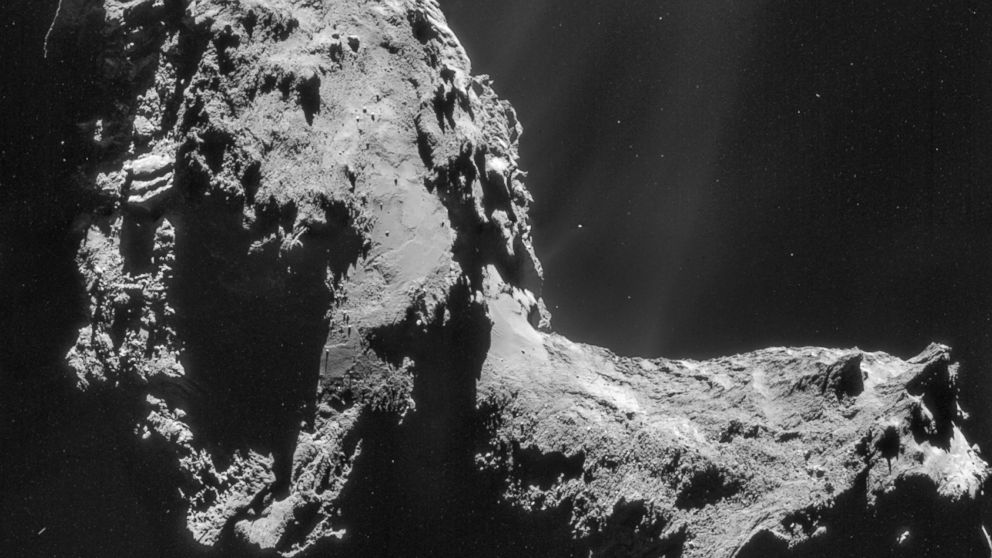Rosetta Finding Deepens Mystery of Where Earth's Water Came From
European Space Agency reveals major finding from comet 67P.

— -- The first major finding of the Rosetta space probe has upended the theory that water was brought to Earth by comets.
Observations from the Rosetta mission, which landed on comet 67P in November after a decade-long mission, reveal that water vapor found on the 2.5-mile long comet is significantly different from that found on Earth.
The results were published in the journal Science and were detailed on the European Space Agency's website.
The distinct nature of the comet's water was measured in August when Rosetta reached 67P and three months before the spacecraft's lander Philae touched down on the cosmic mass.
After the formation of Earth some 4.6 billion years ago, one hypothesis is that water would have come after the planet cooled down, likely from collisions with comets and asteroids.
Instruments on board the Rosetta spacecraft were able to analyze the chemical structure of the water and determine that 67P's water did not match the signature of Earth's H2O.
Differences were detected in the ratio of deuterium, which is an isotope of hydrogen with an extra neutron, to that of normal hydrogen, according to the European Space Agency, sharpening the mystery of how the planet's oceans originated.
Scientists said they will continue to watch how the comet behaves as it continues on its 6.5-year orbit around the sun, looking for new insights about the origins of the solar system.




